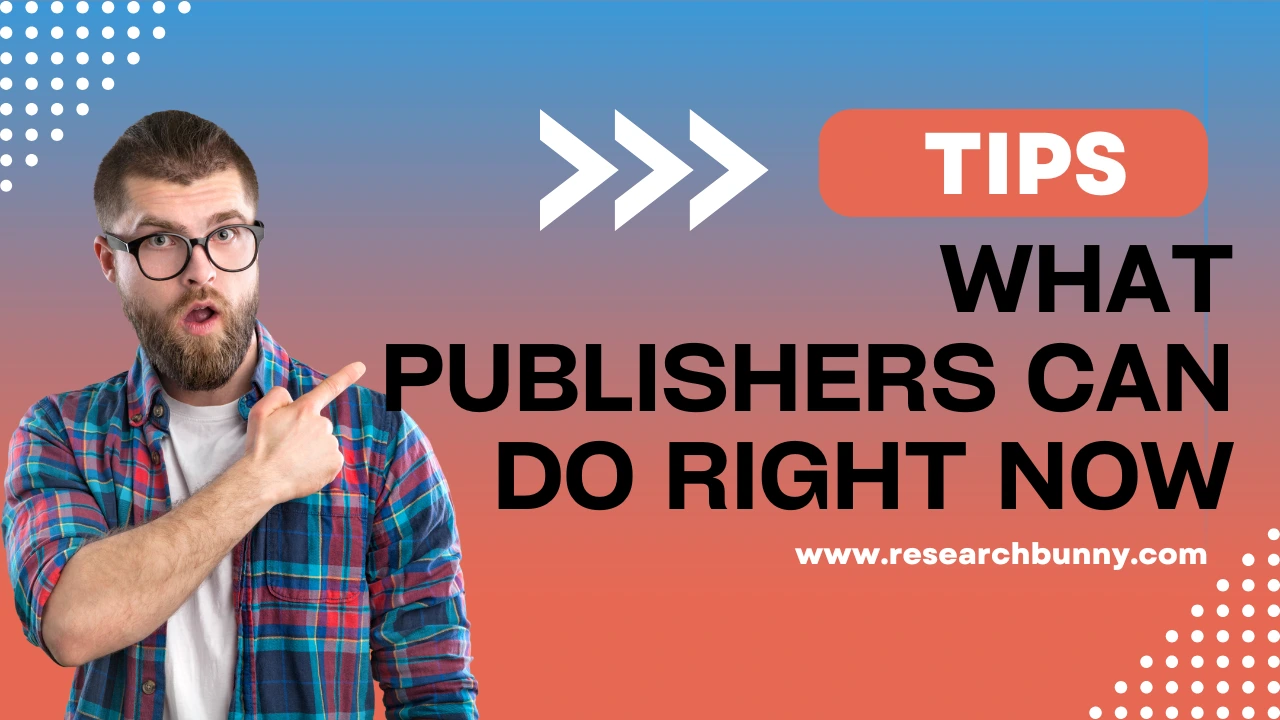
What a Research Scholar Should Know?
Plagiarism is often mistakenly perceived as simply copying and pasting someone else's work. While this is a clear violation, plagiarism encompasses a broader spectrum of intellectual dishonesty. It involves presenting someone else's ideas, words, or work as your own, without giving proper credit.
The word itself carries a weight of academic and professional shame. But what exactly constitutes plagiarism? And how can you avoid it?
Plagiarism is often mistakenly perceived as simply copying and pasting someone else's work. While this is a clear violation, plagiarism encompasses a broader spectrum of intellectual dishonesty. It involves presenting someone else's ideas, words, or work as your own, without giving proper credit.
1. Beyond Copying and Pasting
Plagiarism extends beyond verbatim copying. It includes:
- Rewording someone else's work: Changing a few words or phrases while maintaining the original structure and ideas without proper attribution.
- Using AI-generated text without disclosure: Employing tools like ChatGPT to generate text and presenting it as your own original work is considered plagiarism in many academic and professional contexts.
- Self-plagiarism: Reusing your own previously published work in a new context without proper citation.
2. The Importance of Proper Citation
Citing sources is not merely an academic formality; it's an ethical obligation.
Proper citation:
**Acknowledges the work of others:** Gives credit where credit is due, respecting the intellectual property of others.**Builds trust and credibility:** Demonstrates the integrity of your research and strengthens your argument by showcasing the foundation of your work.**Protects you from accusations of plagiarism:** Provides clear evidence of your sources and avoids potential legal and academic repercussions.
3. Understanding the Nuances of Plagiarism:
- Paraphrasing: Even when paraphrasing, you must acknowledge the original source. Simply changing a few words while maintaining the original structure and ideas without proper credit is still considered plagiarism.
- Unintentional Plagiarism: Careless note-taking or inadequate citation practices can lead to unintentional plagiarism.
- Image and Data Plagiarism: Using images, charts, or data without proper attribution is also considered plagiarism.
4. Diverse Landscape of Academic Integrity
Plagiarism isn’t a one-size-fits-all issue—the rules and expectations can look very different depending on where you are and what you’re working on. In academia, the emphasis is often on proper citation and originality of research. In journalism, it's about transparency and attribution, while in creative writing, it can center around inspiration versus imitation.
Each discipline has its own standards, style guides, and grey areas, making it essential to understand the specific norms of your field. What might be considered fair use in one context could be a serious offense in another. Knowing these nuances is key to navigating your work with integrity.
The rules and expectations regarding plagiarism can vary across different fields. Academic, journalistic, and creative writing all have their own specific guidelines and standards.
5. The Serious Consequences of Plagiarism
Plagiarism can have severe consequences for students, academics, and professionals. These can include:
- Academic penalties: lower grades, suspension, or even expulsion from academic institutions.
- Professional repercussions: damage to reputation, loss of credibility, and potential career termination.
- Legal consequences: In some cases, plagiarism can have legal repercussions, including fines or even lawsuits.

6. The Role of Technology
Technology plays a huge role in identifying and preventing plagiarism—and the tools available today are more powerful than ever. Here are some widely used platforms that help uphold academic and professional integrity:
- Turnitin: Widely used in academia, Turnitin compares submitted papers against a massive database of student papers and published works.
- Grammarly: While primarily known for grammar and spell-checking, Grammarly also includes a plagiarism checker that can detect similarities between your text and other online sources.
- Copyscape: A popular plagiarism checker, it compares your text against a vast database of web pages and published works to identify potential instances of plagiarism.
- Quetext: A user-friendly plagiarism checker, Quetext offers DeepSearch™ technology, combining contextual analysis and fuzzy matching to catch less obvious cases of plagiarism.
- Plagscan: Often used in both academic and business settings, Plagscan integrates with learning management systems and offers detailed reports to help ensure content originality.
- Unicheck: Tailored for educational institutions, Unicheck checks against internal databases, open sources, and published journals. It also highlights citation issues and helps improve writing transparency.
These tools can detect even subtle forms of plagiarism, including paraphrasing and paraphrasing. They can be valuable resources for identifying potential plagiarism issues in your own work and ensuring the originality of your content. However, it's important to remember that these tools are not foolproof and should be used in conjunction with careful research and proper citation practices.
7. Ethical Considerations in the Age of AI
As AI tools like ChatGPT, Jasper, and others become more embedded in academic and creative workflows, the lines around originality, authorship, and plagiarism are becoming blurrier. While these tools can assist with brainstorming, drafting, and refining ideas, there’s growing debate around how much AI-generated content is too much—especially in academic settings where originality and critical thinking are paramount.
Key ethical questions are emerging:
- Who owns AI-generated content? If an AI helps write an article or paper, does the credit go to the user, the tool, or both? Most institutions don’t have clear policies yet, making it a grey zone.
- Is using AI a form of cheating? Not necessarily—but it depends on how it’s used. Using AI to polish grammar or check for structure is one thing; relying on it to write entire sections without understanding the content is another.
- Disclosure is key: If AI plays a significant role in generating your content, disclosing its use is often the ethical route—especially in research, journalism, or publication contexts.
- Citations and AI: AI tools don’t always pull from verifiable or citable sources, and some even "hallucinate" facts. Relying on AI for references or claims without double-checking can lead to academic misconduct—even if it’s unintentional.

8. Beyond Academia
Plagiarism in the Professional World - Plagiarism isn’t just an academic issue—it can have serious consequences in the workplace too. From journalism and marketing to tech and design, originality is critical. Copying content, even unintentionally, can damage reputations, lead to legal trouble, and erode trust. Whether you’re writing a report, crafting a campaign, or publishing online, the same rule applies: always give credit where it’s due.
9. Cultivating a Culture of Academic Integrity
Promoting academic integrity goes far beyond enforcing rules—it's about shaping a mindset that values honesty, transparency, and respect for intellectual work. For PhD students and researchers, this is especially important, as the work they produce often forms the foundation for future scholarship and public trust.
A culture of integrity starts with clarity. Institutions and supervisors should provide detailed, field-specific guidance on citation practices, data usage, and collaborative authorship. But equally important is creating space for open dialogue—where researchers can ask questions, share concerns, and reflect on ethical challenges without fear of judgment.
Workshops, peer discussions, and mentorship play a vital role in reinforcing these values. When integrity becomes part of the daily research conversation—not just something mentioned in policy documents—it’s far more likely to take root. And in the long run, it ensures that the research we produce is not only rigorous, but also responsible.
10. Developing Good Research and Citation Habits
Developing strong research and citation habits early on is crucial for preventing plagiarism. This includes:
- Careful note-taking: Clearly differentiate between your own ideas and those of others.
- Consistent and accurate citation: Use a consistent citation style (e.g., APA, MLA, Chicago) and ensure all sources are properly cited.
- Regularly reviewing and revising your work: Check your work carefully for any instances of unintentional plagiarism.
11. The Long-Term Impact of Plagiarism
The consequences of plagiarism go far beyond a failed assignment or disciplinary warning. A reputation for academic dishonesty can follow you into graduate school applications, job interviews, and professional settings—where integrity and credibility matter just as much as qualifications. In fields like academia, journalism, and publishing, even a single instance can lead to blacklisting or retraction of work.
12. Cultural Differences in Plagiarism
Not all cultures treat intellectual property and authorship the same way. In some educational traditions, learning through memorisation, repetition, and imitation is a respected practice—seen as a way of honouring authoritative sources rather than claiming them as one's own. However, in most Western academic systems, originality, citation, and individual contribution are central.
As academia becomes more global, it’s crucial to acknowledge these cultural differences and support international students in understanding the expectations of their new environments. Rather than assuming ill intent, institutions should provide early, empathetic guidance on citation standards, paraphrasing, and attribution to help bridge these gaps.
13. The Role of Educators and Institutions
Combating plagiarism isn’t just a student responsibility—educators and institutions play a key role too. Providing clear guidelines, promoting writing support, and creating a culture where learning is prioritised over grades can go a long way in reducing both intentional and accidental plagiarism.
14. Plagiarism Can Jeopardise Collaborations
In PhD research, you're often working with co-authors, supervisors, and research teams. If plagiarism is detected—even by accident—it can damage not just your work, but your collaborators’ reputations too. Be extra cautious when drafting shared work and publications.
15. The Rise of Contract Cheating and Ghostwriting in Grad School
There’s growing concern about PhD candidates using ghostwriters or paid “editors” who cross ethical lines. Even if the final product is polished, submitting work you didn’t fully write or understand violates academic integrity—and may disqualify your degree.
And in today’s hyper-connected world, digital footprints don’t fade easily. Employers, collaborators, and institutions often do background checks—and being associated with plagiarism can quietly close doors before they ever open. Protecting your reputation means being proactive about originality, transparency, and ethical writing habits from the start.
Conclusion
Plagiarism is a serious issue with significant consequences. By understanding the nuances of plagiarism, cultivating ethical research practices, and seeking guidance when needed, you can ensure the integrity of your work and maintain a strong academic and professional reputation.
Disclaimer: This blog post is for informational purposes only and should not be considered legal or academic advice. We encourage you to consult your institution's academic integrity policies and seek guidance from your professors or mentors for any specific questions or concerns.
Thanks for reading!
Skip the jargon. Hear key insights from real papers in 15 minutes or less in your language.

Get notified every time we post a new blog















